A millennial couple overcame 3 challenges turning a ruined chapel into a $250-a-night Airbnb. Take a look.
In 2021, O'Mara and Adam Dunnigan bought a 120-year-old chapel, saving it from demolition.
The church, topped with a 65-foot steeple, was basically a rotting "birdhouse" when they bought it.
The couple spent a year turning it into a $250-a-night Airbnb and have just put it up for sale.
O'Mara and Adam Dunnigan were golfing in Detroit Lakes, Minnesota, in the summer of 2021 when they noticed a tiny white chapel perched on a two-acre plot between rolling green hills.
"We were like, 'Oh, look at that cute little church," O'Mara, a 39-year-old real-estate agent, told Business Insider.
Detroit Lakes is a small city in northwest Minnesota — closer to Fargo, North Dakota, than to Minneapolis — that comes alive in the summer.
According to O'Mara, who lives with Adam, a 40-year-old engineering director, and their two children in the nearby town of Audubon, the population of Detroit Lakes triples during the warmer months. Vacationers flock there to enjoy hiking, biking, fishing, and swimming.
They didn't think of the chapel again until O'Mara stumbled upon it when scanning real-estate listings for work.
The 3,061-square-foot church, topped with a golden steeple, was on the market for $115,000 — a steal compared to the $373,252 average value of a home in Detroit Lakes, according to Zillow.
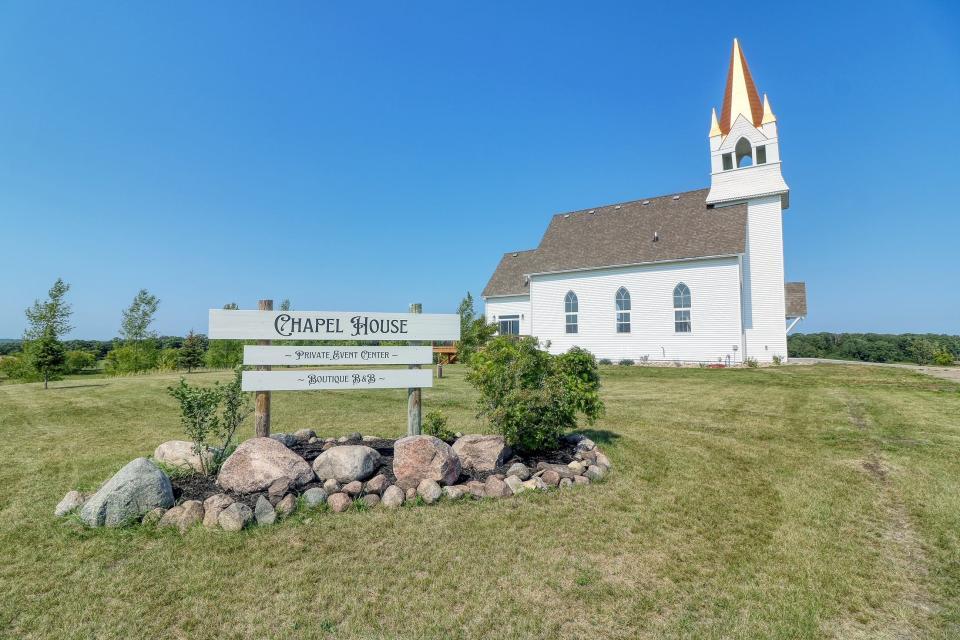
Besides the low price tag, the Dunnigans said they fell "in love" with its 24-foot ceilings.
At first, they had "no idea" what they were going to do with it. But O'Mara suspected it would make a great Airbnb whose rental income could supplement their day-job salaries.
The Dunnigans spent roughly a year and around $400,000 converting the church into a quirky $250-a-night Airbnb and event space that they said is booked "solid" throughout the year. Guests include people looking for a spot to host graduations, birthday and anniversary parties, as well as a few weddings and baby showers.
The Airbnb makes about $40,000 a year in revenue, said O'Mara.
"We both work full-time and this is just a side gig for us," she said. "Anyone with ambition to run a business could drive that number up. Sky's the limit."
But this year, realizing how busy their schedules were and deciding to prioritize the vacation home they've just purchased in Portugal, they're ready to "have somebody else love it."
The chapel is on the market for $549,900.
But getting it into shape for a new owner was no easy feat. Take a look.
The church was in rough shape after 120 years of being used and moved
The biggest issue the Dunnigans faced was how much wear and tear the chapel had sustained since it was built as a place of worship for a Norwegian-speaking Lutheran congregation in 1909.
Due to a dwindling number of churchgoers, it was forced to close in 1960 and sat abandoned for nearly three decades.
"It was basically a giant birdhouse. Windows were broken out of it," O'Mara said. In 1983, a local family bought it, put it on the back of a trailer, and moved it to a farm a mile down the road.
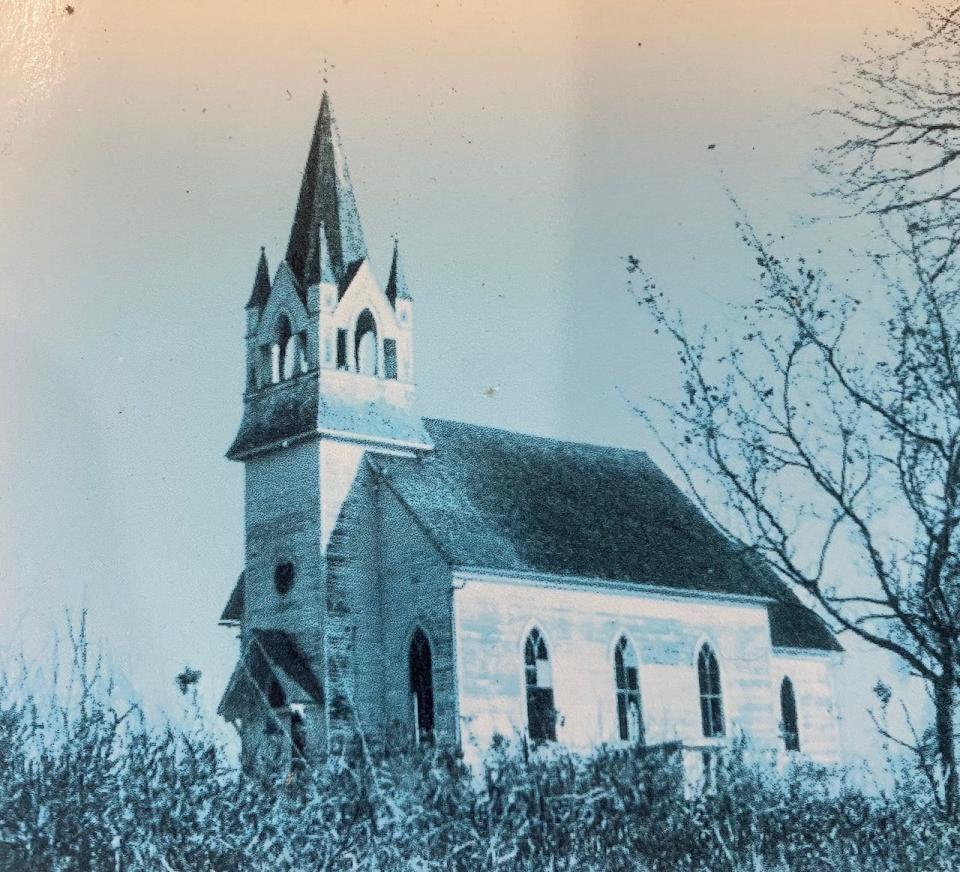
The family turned it into a small boutique before selling it in 2000, when it was moved to its current location and turned back into a church.
But fewer and fewer people came to worship, leaving the previous owners desperate to sell to avoid tearing it down.
"It was really being held together with sawdust and prayers," O'Mara said.
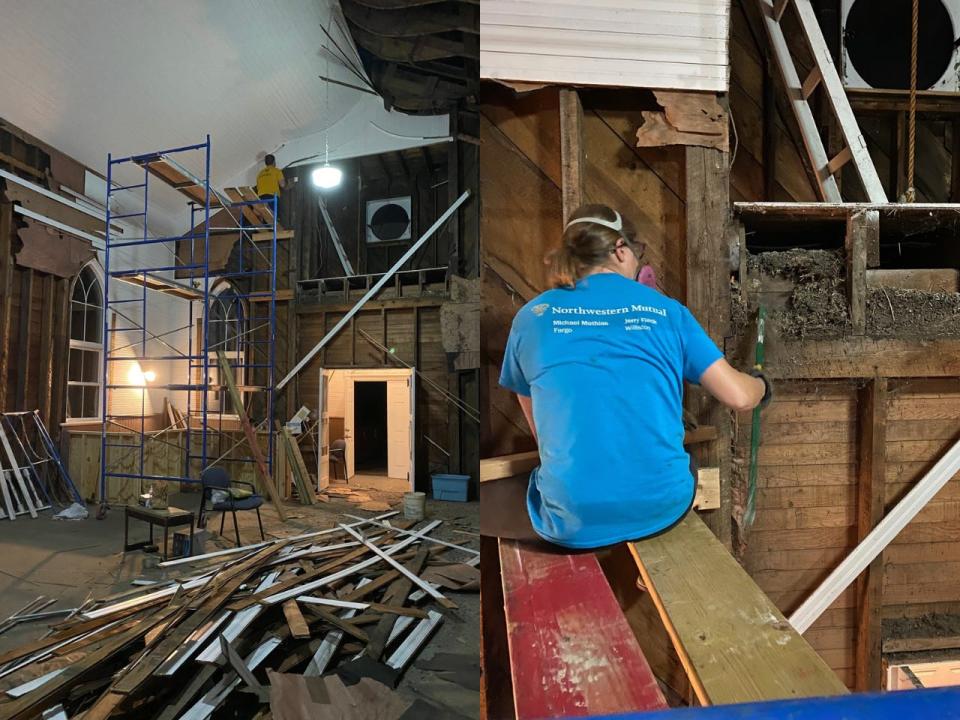
When the Dunnigans bought the chapel, there was rot in the steeple caused by holes, zero insulation, and an attic full of birds — both dead and alive — that the last owners couldn't afford to clean and repair.
The Dunnigans whipped the chapel into shape themselves, which required strapping on masks to clear out all the muck in the attic and completely gutting it.
O'Mara said the overhaul was necessary because she wouldn't have felt "comfortable" renting out the chapel "in that state."
They had to search for the right skilled contractors
O'Mara and Adam's next hurdle was finding people to help them turn the broken-down chapel into a chic space people could rent.
The structure was originally built by volunteers, not trained professionals, and repairing it required a delicate touch.
"It was basically like a giant Jenga in real life," O'Mara joked, adding that the steeple looked like "a handyman special."
The couple met two contractors who took one look at the chapel and how much work it needed, then ran away "about as fast as you could," O'Mara said.
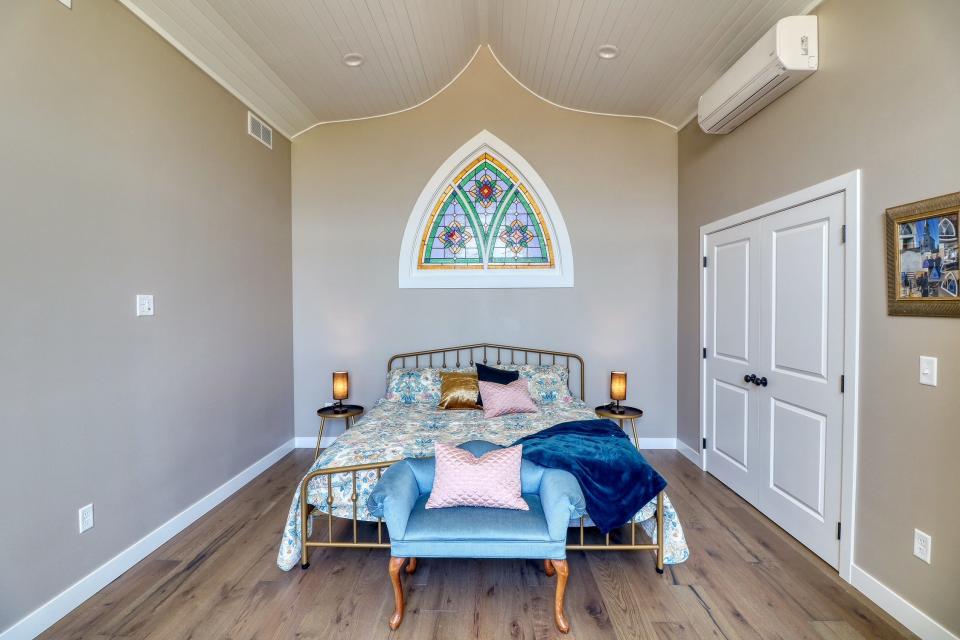
They then found a local contractor whose father had built church altars.
"If you could find someone more qualified, good luck," O'Mara said.
The contractor helped the couple with all the necessary repairs, including adding new support beams, insulation, a septic tank, an HVAC system, plumbing, and electrics, as well as figuring out how to retain some of the chapel's original features.
"There were things that would have been easier and cheaper, but we wanted to enhance the beauty of what was there as opposed to stripping it," O'Mara said.
The couple modernized the church but kept several nods to its past
Once the chapel was gutted, O'Mara said they were left with "a blank canvas."
O'Mara has noticed that more people are converting old churches and non-residential properties into homes, but knew "one of the trickiest parts is that it can be done horribly wrong and stripped of its character."
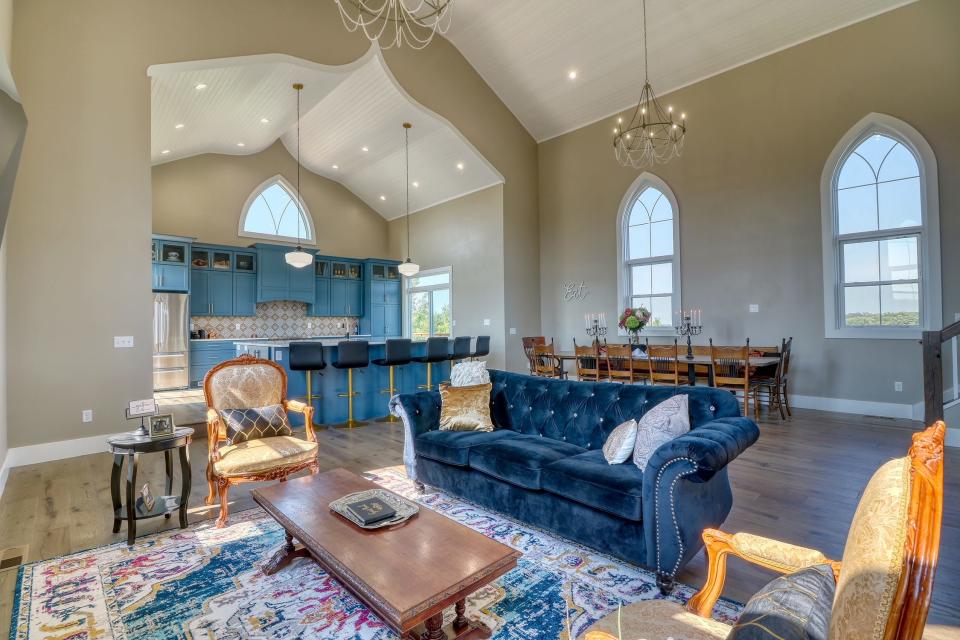
With the help of their contractor and an interior designer, they completed the project in just over a year.
The result is a chapel house with two spacious bedrooms, a game room, a TV room in the basement, and a loft above the entry where a larger third bedroom and ensuite are located.
The formally sparse main floor is now completely open plan, featuring a blue-painted kitchen with an island large enough to seat six situated in the former church altar, a huge dining table made from dark repurposed wood, and a cozy sitting area with a TV.
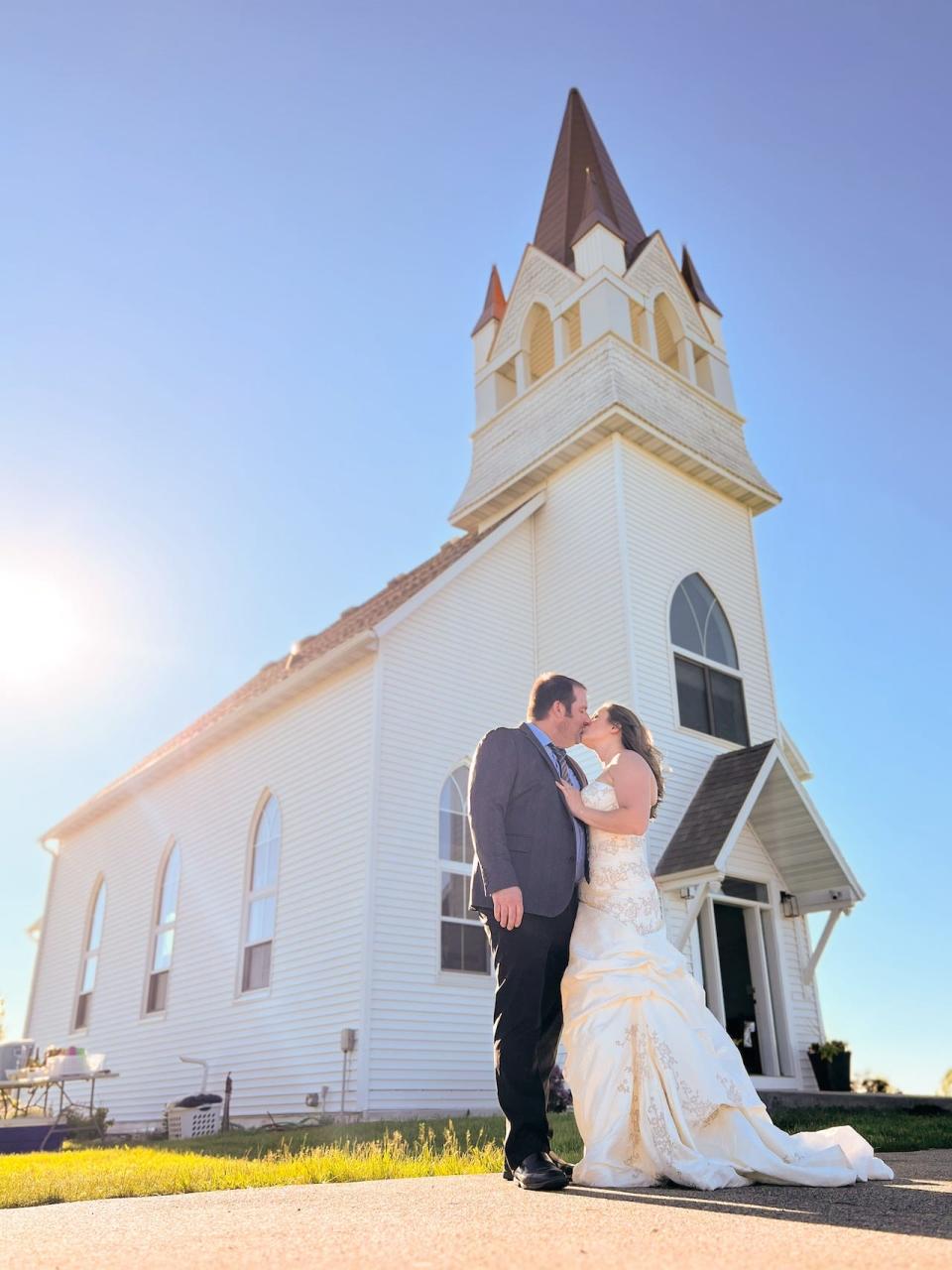
The Dunnigans also incorporated references to the building's past, including adding custom-made stained glass windows to the primary suite and placing church-inspired furniture, like a mini-grand piano and a prayer chair, alongside modern pieces.
O'Mara likes to call the result "castle chic" — she said it's a place "you're not scared to make yourself comfortable in," but that makes you think, "Oh, wow, this is cool."
With the number of Airbnb guests they've hosted and the events the chapel has been able to accommodate — including the Dunnigans' 15-year very own wedding vow renewal in June — O'Mara is proud they made it "a place to gather" once more.
"At the core, that's what a church is," she said. "We took it wider and said it doesn't need to be religious."
However, they are ready for someone else to put their creative spin on the building.
"It can be whatever you want it to be," O'Mara said. "It would make a killer tattoo parlor."
Read the original article on Business Insider

